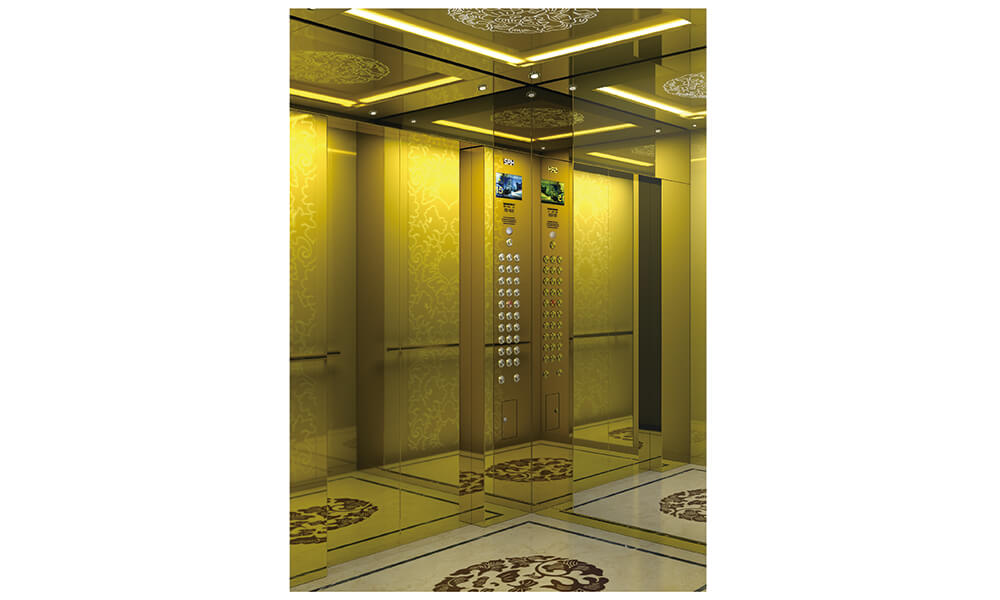Ann McGee loves her home. If you saw it, you would understand. Every room of the 2,800-square-foot Mediterranean-style house in Winter Park reflects her well-traveled life, her many friendships, her rich memories. She loves her oasis-like patio. She loves her neighbors and her community.
What she doesn’t love are her stairs. Home Lift

At age 73, the retired college administrator, who’s had one knee replaced, found that an upstairs master was a bit of a pain – literally. She considered renovating to put a bedroom downstairs, but that was too costly. Moving from her home of 15 years didn’t appeal either.
When her niece showed her a magazine ad she’d clipped that featured a modern-looking shaftless elevator powered by air pressure, McGee was intrigued. “It didn’t look like any home elevator I’d ever seen,” she said. “It looked like a piece of art.”
Plus, the installation did not involve knocking out walls or digging under the floor into the foundation as required for traditional shaft elevators. Shaft elevators send cabins through 5x5 foot (minimum) spaces within walls, while shaftless elevators sit in the open on finished floors. Their see-through cylinders transport passengers from floor to floor using air pressure or cables. McGee talked to a couple of elevator companies that sold pneumatic vacuum elevators, and this past November elevated her own home with one.
“I love the look of it,” she said of the tube-shaped elevator tucked in just beside the stairs in her entryway. “I worried that it would ruin the aesthetics of my home, but it’s enhanced it.” McGee selected the color of the metal as well as the tint on the polycarbonate windows.
While she doesn’t use it every time she wants to go up or downstairs, McGee, an avid traveler, definitely uses it for her luggage.
Dawn O’Connor, owner of Daytona Elevator, rattles off the reasons customers call her. “Hips, knees, hearts, backs, lungs, in-laws, convenience.” Her family-owned business has been installing elevators since 1987.
To that list, Rich Eller, owner of HomeLift, a Nashville-based elevator dealer, adds those people who “flat out are not moving and have got to get upstairs.”
Given the demographics, the demand for home elevators is quickly growing, and the shaftless models are the fastest growing sector, he said. Five years ago, shaftless elevators accounted for 6% of Eller’s home elevator installations. Last year, that percentage more than doubled. He expects that 20% to 25% of home elevators will be shaftless by 2025.
“We have a population of people who want to age in place,” Eller said. “More people are realizing that installing an elevator or a stair lift is a lot cheaper than moving. Builders and architects recognize this is a growing market and are designing more homes with elevators in mind.”
“I love where I live and how I live,” McGee said. “I wanted to buy more time in this house, and I did.”
While not every home is a candidate for an elevator, if your home’s stairs are becoming an issue, here’s what to consider before you pack up and move.
· A solution for every budget. If creating a downstairs bedroom isn’t an option, the lift industry has many ways to get you upstairs, O’Connor said. The least expensive option is a stair lift. A seat that travels straight up a flight of stairs typically costs between $3,500 and $4,000. If the stairway curves or takes a turn, the stair lift cost will climb to as much as $15,000. Pneumatic vacuum elevators cost from $35,000 to $60,000, depending on the size. They come in three widths: 30-inches; 37-inches, which is what McGee purchased; and 52-inches, which will accommodate a wheelchair. McGee paid $40,000 for her elevator, which includes a fold-down seat and phone. Some shaftless lifts sell for as little as $28,000. Construction costs to retrofit a space is additional, and varies with the work required.
· The best time to install an elevator is when you’re building a home. But adding one later may be easier than you think. Before you give up on the idea because you don’t see where you could install an elevator, have an expert out. “Often people think they don’t have a place to put an elevator, then we find two or three possibilities,” Eller said.
· Location, location, location. When looking for the best placement, start upstairs to find where you would like to exit, usually on a landing or common area, and work down. Remember you can enter on one side of the elevator and exit out the other side. For a traditional elevator built into a shaft, two closets stacked on one another is ideal. These shafts can be inside a home or built onto the exterior. A shaftless elevator is easier to fit in most homes.
· Looks matter. The entry to a traditional elevator can truly blend into the woodwork. It can mimic paneling or a closet door, so you don’t even know an elevator is there. However, as home elevators become more common and sculptural, many are coming out of the closet.
· Added home value. Most realtors agree that a home elevator done well adds value. “I feel like having an elevator lets you tap into a whole new market,” McGee said.

Home elevator Marni Jameson is the author of six home and lifestyle books, including “What to Do With Everything You Own to Leave the Legacy You Want,” “Downsizing the Family Home – What to Save, What to Let Go,” and “Downsizing the Blended Home – When Two Households Become One.” You may reach her atmarnijameson.com.